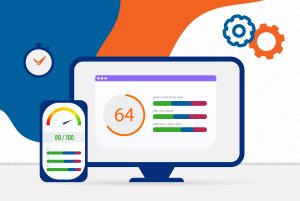As technology evolves and search engines get smarter, marketers and SEOs need to advance and stay ahead of the latest trends. However, we all too often see old SEO tactics employed on contemporary websites.
For example, Google has been reporting for years that it does not reference meta keywords. (Other, smaller search engines still do, so meta keywords are not a complete waste of your time, but they won’t help you target Google traffic.)
So how do you know if you are employing the right SEO tactics to achieve the results you want? You first need to determine your key performance indicators (KPIs) – how you will measure your SEO program’s success.
When the digital realm was less complex, this was easy. The higher your website was ranked and the more people that search engines drove to your website were all that mattered. Now that Google, Bing and others are employing near artificial intelligence to determine the meaning behind search queries, these KPIs no longer indicate quality traffic that generates leads and converts to sales.
Let’s take a look at how SEO used to be measured vs. what you should be looking for in your 2016 campaigns.
Old School Signs of Success
Search Engine Ranking Position
Everyone wants to be ranked #1, and that used to be enough to bring you relevant traffic. As the web has grown – and people of all ages have grown more accustomed to online searching – searches themselves have become more complex. Instead of searching for “cancer reagents,” scientists search for specific pathways, targets and applications – all in the same long-tail search phrase. The generic keywords that you might want your company to rank #1 for are no longer searched (or if they are searched, they are being searched by people who are looking for a definition – not prospective customers).
Ranking on keywords that you choose is no longer an SEO solution. It may make you feel good to rank ahead of your competition on general keywords, but it won’t help you steal the competition’s market share. In a context-driven search world, Google must be able to derive the meaning from your website and serve it up to people who are truly interested in your products and services. Your customers determine your keywords. You need to be there to listen and respond.
Website Traffic
Growing your website traffic is usually a good thing, but growing that traffic for the sake of showing higher numbers is irresponsible and can actually hurt your SEO efforts. Remember those people who search your general keywords because they are looking for a definition or are working on a science project? These people are not your targeted prospects. You don’t want their numbers inflating your overall site traffic and decreasing your site’s credibility with bounces, less than average time spent on your site and low conversion rates.
When these visitors leave your site quickly, they skew your data in analytics (and therefore your ability to determine ROI for your campaigns). They also decrease your credibility with search engines, making it harder for real customers to find your company.
What You Should Measure
Click Through Rate
It doesn’t matter how high you rank if no one clicks on your page. Plus, you won’t maintain your page ranking if you aren’t getting clicks. Search engines view your CTR as a sign of your website’s relevance and credibility. You can find your CTR by using online resources such as Google Webmaster Tools.
Traffic Quality
Are your organic visitors converting into leads? If they aren’t, or if your other traffic sources are driving the majority of your leads, you have work to do. The focus of modern SEO is not simply driving more traffic to your website, but providing quality traffic that does not bounce off of your site, views multiple pages and completes one of your desired visitor actions. Traffic quality is determined by a variety of analytics.
Conversions
The point of most websites is to drive sales and generate leads. Your SEO program should be supporting these efforts, and you should be able to measure those results (i.e. conversions). If you use Pay-Per-Click advertising, one simple way to tell how your SEO program is stacking up is by assigning dollar values to your traffic in Google Analytics. You can then use search terms to show what you would have spent in Google AdWords for the same traffic – and you can compare the conversion rates.
Want to find and grow the KPIs that mean the most to your business’s bottom line? Contact Bill White or Abby Spung at 800.606.1610 to get started today.


